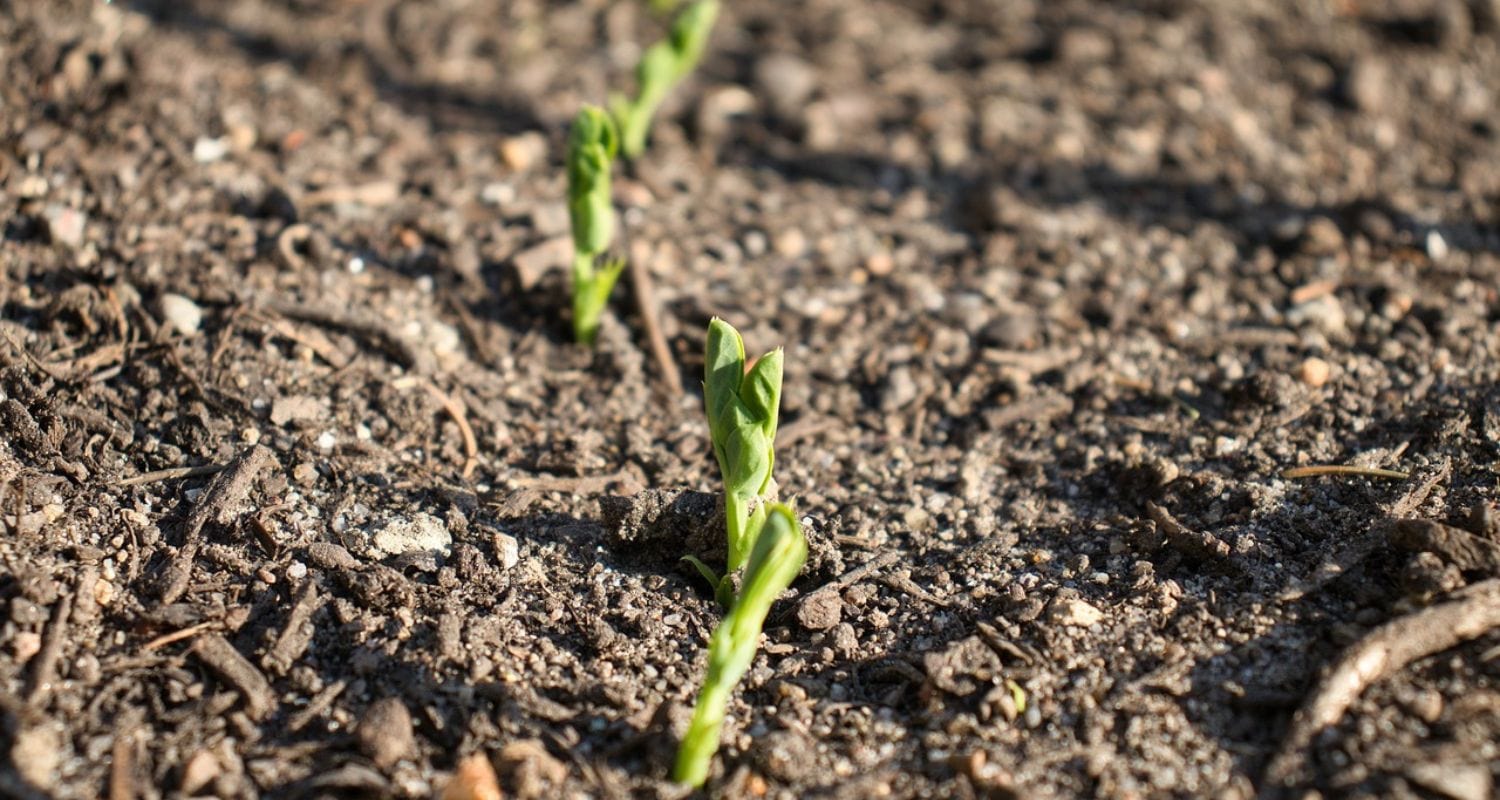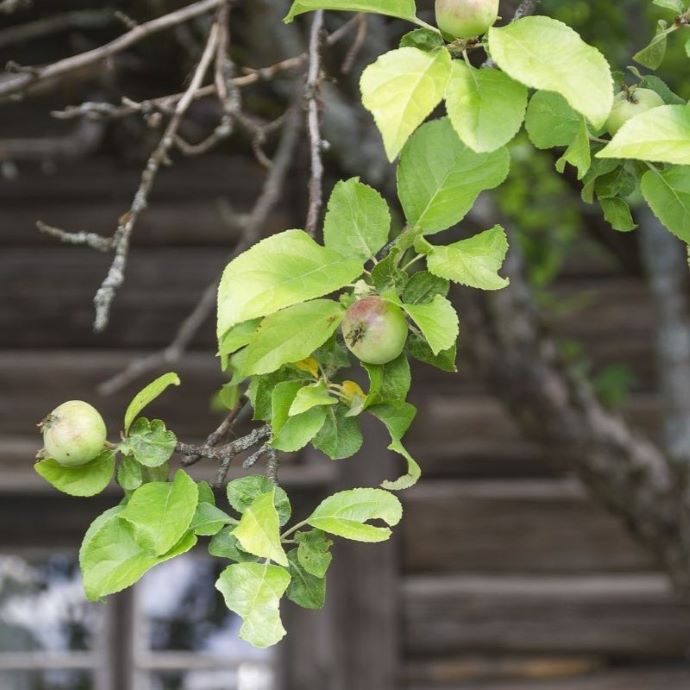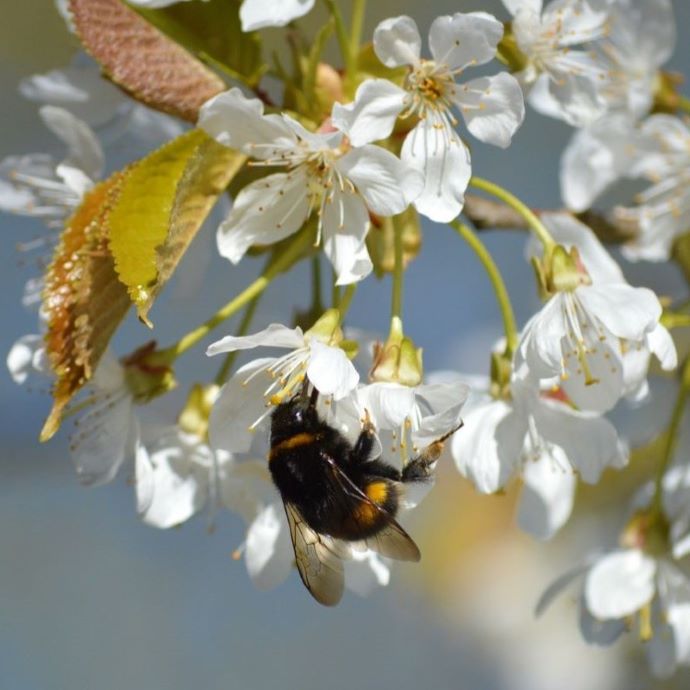Advice & Inspiration
Succession Planting: UK Grower’s Guide

Growing your own vegetables is one of the most rewarding things you can do with your garden, but you couldn’t live on them all year round - or could you?
If you’ve harvested all of your summer vegetables and you’re now looking out at bare raised beds wondering if there’s anything you could do with them, you’re in the right place. Succession planting is the art of getting one crop to follow another, making your plot work for you all year round.
No more gluts, no more hungry gap, just a steady supply of lovely fresh veg for longer. You don’t even need any extra space - succession planting is about maximising the garden you have so that there’s always something to pick, there’s never an empty bed and there’s definitely no picking up a pack of supermarket spinach and exclaiming “HOW MUCH??”.
So how do you do succession planting? There’s no right or wrong way - the best thing to do is experiment until you find a method that works for you. To get you started, here are some ideas.
Jump to:
- Crop and repeat
- Superfast crop and repeat
- Seasonal planting
- Crop rotation
- Intercropping and companion planting
- Mixing varieties
- Giving your beds a rest
Crop and repeat
This is the best method of succession planting for avoiding that dreaded glut - *cough*courgettes*cough* - and getting a good supply of your favourite veg all season long. So instead of planting the whole packet of courgette seeds at once, limit yourself to three or four at a time then repeat every two weeks.
As your courgette plants mature at different times, they’ll produce a staggered harvest that you can enjoy in moderation, rather than the usual ‘courgettes with everything’ month followed by three months of ‘damn I miss the courgettes’*.
*other over-productive vegetables are available.

Superfast crop and repeat
Quick growing crops like lettuce, spinach and other salad leaves are something you want all summer long, not all at the same time. So instead of planting all your lettuces at the same time, plant two or three, then wait two weeks and plant a couple more.
As they only take about sixty days to mature, you’ll be picking in no time. If you choose cut and come again lettuce varieties, you can simply pick what you need daily rather than harvesting the whole lettuce head at once. Keep planting until August or September and you’ll have a manageable crop of salad pretty much constantly.
Hardcore salad fans may also like to know that you can grow your favourites over the winter too - just look for lettuce, spinach and kale varieties that describe themselves as ‘autumn planting’ or have words like ‘winter’ or ‘arctic’ in the name.
You’ll need to keep these under cover - I use a cheap mini greenhouse placed over a raised bed - and keep an eye out for slugs during wet weather, but I find this is a small price to pay for the smug satisfaction of picking lettuce leaves in December.

Seasonal planting
This is your best bet for maximising output from a small space, and simply involves growing one crop, harvesting it as soon as it’s ready and planting another crop in its place.
A good example of this is square foot gardening, in which the plot is divided up into squares of 1x1’ (30.5cm square) and each square is used for three successional crops. For example, a five square foot garden plan might look like this:
|
Square |
Crop |
|
1 |
Spring: plant spinach Summer: harvest spinach, plant dwarf French beans Autumn/winter: harvest beans, plant garlic |
|
2 |
Spring: plant tomatoes Summer: harvest tomatoes, plant sweetcorn Autumn/winter: harvest corn, plant parsley |
|
3 |
Spring: plant spring onions Summer: harvest spring onions, plant spinach Autumn/winter: harvest spinach, plant broad beans |
|
4 |
Spring: plant peas Summer: harvest peas, plant tomatoes Autumn/winter: harvest tomatoes, plant beetroot |
|
5 |
Spring: plant broccoli Summer: harvest broccoli, plant carrots Autumn/winter: harvest carrots, plant winter cabbage |
Bear in mind that you won’t be able to grow larger plants such as pumpkins, squashes and potatoes or perennial vegetables like artichokes in this way as they take up too much space, need a permanent bed or a longer growing season.
You can find out more about square foot gardening here, but generally speaking, you can plant any early season crop, follow it with a late summer crop and then plant autumn/winter harvesting vegetables, so that your plot never stands empty.
Unless you want to plant one of the aforementioned crops or anything with a very long growing season, that is - in which case you’ll want to think about a yearly crop rotation system.
Crop rotation
It’s a good idea to plan your vegetable planting with crop rotation in mind, as some plants take certain nutrients from the soil and others put it back, so it’s a fine balance!
For example, plants in the brassica family (broccoli, cauliflowers, kale etc) need lots of nitrogen to grow, so it’s a smart move to plant them after legumes (peas and beans) which fix nitrogen in the soil.
However, you could be in for disappointment if you plant tomatoes after brassicas, as both are heavy feeders and there won’t be enough nitrogen left for the tomatoes to grow well. You can find out more about plant families here.
Here’s an example plan for a small vegetable garden with three raised beds, which shows the best order to grow successive crops over a few years.
|
Year 1 |
Year 2 |
Year 3 |
|
|
Bed 1 |
Tomatoes |
Carrots |
Peas and beans |
|
Bed 2 |
Peas and beans |
Tomatoes |
Carrots |
|
Bed 3 |
Carrots |
Peas and beans |
Tomatoes |
Growing a different crop in a particular space each year is also healthier, as it prevents any build up of specific diseases or pests in one area.
Intercropping or companion planting
Intercropping - planting two or more different plants together that benefit each other - has been practised for thousands of years. The Three Sisters method originates with native American peoples, and involves planting sweetcorn, pumpkins and climbing beans in the same plot together.
Each plant helps the others to grow in some way - the big pumpkin leaves provide shade, prevent weeds and keep moisture in the soil; the tall sweetcorn acts as a support for the beans to climb up and the beans fix nitrogen in the soil, which the other two plants need to grow.
Some other good intercropping pairings are peas or beans with brassicas - brassicas need a lot of nitrogen, which is provided by the peas or beans; or carrots with onions or garlic - the strong smelling onions and garlic help to keep away the dreaded carrot root fly, by disguising the smell of the carrots.
Intercropping doesn’t always have to be planned - it can be opportunistic too! If you see a gap in your planting due to a plant being harvested or eaten by slugs, simply pop another plant in to fill the space.
Radishes are ideal, as they don’t need much room and grow very quickly. I usually plant a few spring onions and garlic bulbs in the gaps between leafy veg as they take up so little space, while having the added advantage of deterring insects and mice.
Companion planting is a similar method which uses plants as natural pest control in the veg patch. It can be used to repel pests (e.g. with strong smelling plants like mint and lavender), attract predators which will eat the pests (e.g. tansy, fennel and marigolds) attract pollinators or even improve the soil quality.

Mix up the varieties
If you have a favourite vegetable, you don’t want to stop harvesting it in September. Many of our best loved plants have early, mid and late season varieties which will keep cropping for much longer than if you only planted one kind (I do this with broccoli every year, as the kids eat it like sweets). The perfect example of this is potatoes.
There are three different types of potato that all crop at different times, enabling you to stagger your harvest over a few months and have a lovely variety of different tastes and textures.
First earlies are harvested from June to July, second earlies from July to August and maincrops from August to October, meaning your crop will be nicely spread out. Potatoes keep well, so don’t worry too much if you do get a glut - but don’t be like me and forget to label which is which, as the plants look identical.
Mixing up your veg varieties and planting some of each is also a great insurance policy against any single variety failing. If one kind of plant does badly in a particular year, the chances are the rest will be fine, and you’ll be saved from a fate worse than slugs: having to go to the shop when your broccoli craving strikes. Shudder.

Give it a rest
Getting the maximum use from your vegetable beds is really satisfying, but from time to time your soil will need a break. Crops which take a lot of nutrients from the soil, like brassicas, can leave your beds rather depleted and affect any subsequent crop, so from time to time it’s a good idea to refresh them. You can do this in a number of ways:
Leave the bed empty
The simplest way is to just leave your vegetable bed fallow (empty) over winter, then start again in the spring. After harvesting your last crops, remove the finished vegetable plants and compost them.
The exception to this is peas and beans, as leaving the dead plants and roots in the soil will help raise nitrogen levels. Thoroughly weed the bed, dig it over to allow air to circulate through the soil, then cover it with a good thick layer of compost or manure mulch, which will help restore the goodness that your crops took out.
In spring, you can just dig this into the soil a few weeks before you start planting, and cover it over with cardboard to help the soil warm up.
Grow green manure
Also known as a cover crop, green manure simply means any fast growing cover plant which will fill an unused bed and stop weeds growing there, while preventing soil from being washed away by rain or blown away by wind over winter. As the name suggests, they also put nutrients into the soil in the same way as farmyard manure.
Some good green manure plants include mustard, alfalfa, clover, trefoil and buckwheat. You can grow these by planting seeds directly into the soil in late summer or autumn, depending on when your vegetable crop is finished. Then just chop down the plants in spring, allow them to wilt and dig them into the soil before planting your vegetable crops.
Feed the soil
A relatively quick way to replenish soil is to add some fertiliser. You can either buy this or make your own natural plant food to give your soil a boost with the nutrients it needs. This method allows you to turn over your crops without leaving the soil empty for too long.
Above all, enjoy experimenting with your succession planting, and if you discover a new system, let us know! For more expert tips and tricks on vegetable growing, have a browse through our growing guides.



















